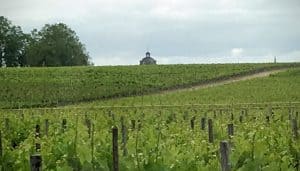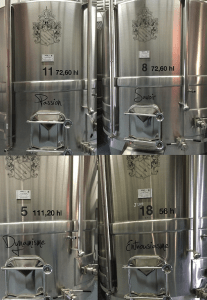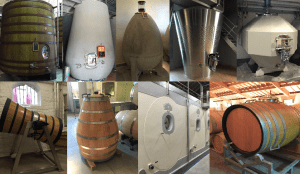Quick question: What is the point of blending?

The tried and true “wine geek” response would usually go off into one of two directions. You can talk about the history of Bordeaux (and other European wine regions) who planted a variety of grapes that bud and ripen at different points as an insurance policy against nature’s follies.
A more poetic approach pictures an artist painting. Each grape variety is a different color on their palette. Instead of using just one color (one grape), the winemaker paints a more vivid, engaging portrait using a multitude of colors at their disposal.
So then, what is a “Bordeaux blend”?
If you’re quick with Google and quicker with a corkscrew, you’re probably rattling off in your head a list of red and white grape varieties that are used to make wine in Bordeaux.
It’s right, but it’s also wrong.
An eye-opening experience during my travels to Bordeaux was this realization of how far-reaching the concept of blending is among the Bordelais. It’s so much more than just blending grape varieties.
Let me give you the example of Chateau Haut-Bages-Liberal, a 5th growth estate in Pauillac.
Across 30 hectares scattered around the villages of Bages and Pauillac, they grow just two grape varieties–Cabernet Sauvignon and Merlot. So the blend each year should be pretty simple right? Grab a few beakers and graduated cylinders and see which ratio of Cab to Merlot works the best.
Not quite.

I’m sure the plot of Haut-Bages-Liberal that stands in the shadow of the tower of neighboring Chateau Latour gets LOTS of individual attention
You see much like the Burgundians; the Bordelais invest deeply into knowing every single plot of soil–its strengths, weakness and quirks. This is knowledge that is acquired over decades, if not hundreds of years.
Ch. Haut-Bages-Liberal has been around since the mid 18th century. Their many years of experience have led them to subdivide their vineyards into 42 different plots.
On our steep learning curve here in New World wine regions like Washington and California, we’ve also started to see different personalities emerging from different blocks. When identified, these blocks may be farmed and harvested differently than the rest of the vineyard. On wine labels, we see heralded blocks like Sheridan’s Block One Cabernet, Schweiger Vineyards’ Legacy Block, Rochioli West Block Pinot noir, etc.

At the Saint Emilion Grand Cru Classe estate of Fleur-Cardinale, they give each plot a name that captures the “personality” of that plot.
But at most Bordeaux estates, every plot is treated as a “heralded block”. Each given its own unique attention.
They will be fermented separately. Some in cement, some in stainless steel. Some in big oak vats, some in small oak barrels. A few plots will even be split into different types of vessels.
At several estates, I was taken back at how many custom-made cement tanks I saw with odd (but precise) volume sizes. Things like 21.6 hL, 23.9 hL, 58.2 hL, 61.9 hL, etc. It eventually dawned on me that each of these tanks was designed and made for a specific plot.
The plots are still kept separate even after fermentation. Here they are transferred to barrel with most estates using the product of 4 to 9 different coopers.
Each barrel adds its own “coloring” to the palate. Some may add more creaminess, some more spice. Others will heighten the attack of the wine upfront while another barrel may push it more to the mid-palate.
A Kaleidoscope of Flavor

An assortment of the unique fermentation vessels used at various Bordeaux estates.
Making the final blend, the winemaker is not dealing with a color palette of only five grapes. Instead, they’re dealing with a kaleidoscope of colors (and flavors). At their disposal is a hundred (or more) different lots that have taken a unique path from vineyard to bottle.
It is an art form in the most literal sense.
While there are many outstanding New World producers of “Bordeaux-style” blends, I have not come across many who take the concept of blending to the degree of the Bordelais.
The Bordeaux Blend is so much more than merely blending grape varieties. It’s about expanding the palette to include not only more colors but more shades of those different colors.
This expanded palette is just one way that the Bordelais has dazzled the palates of wine drinkers for centuries.
